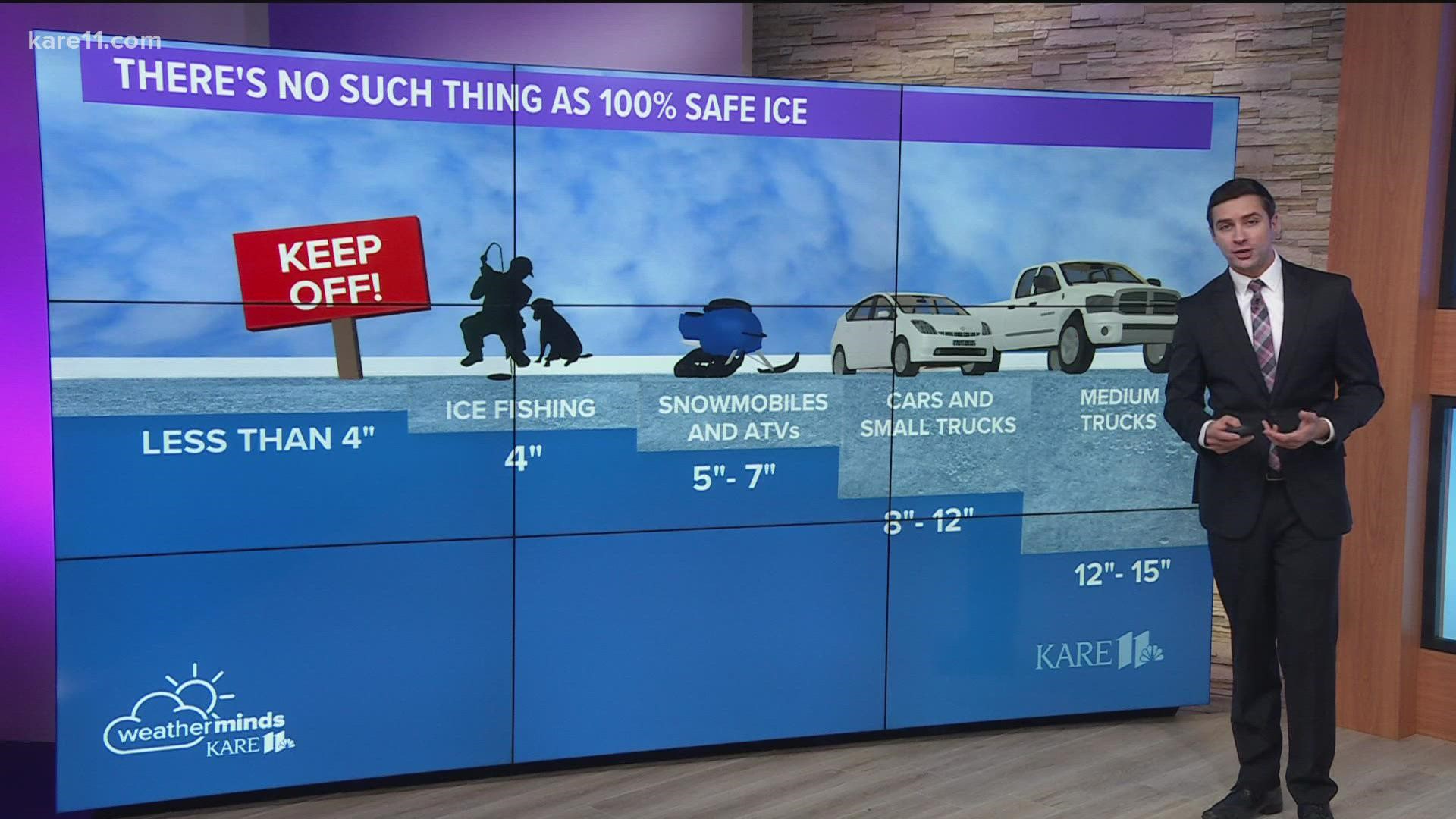MINNEAPOLIS — Editor's Note: The video above is a WeatherMinds report on ice thickness and originally aired on Nov. 16, 2021.
The Minnesota Department of Natural Resources are urging anglers to be cautious when they venture out onto the ice this year.
According to the DNR, people should check the thickness of the ice before they recreate on it with a spud bar, auger or another device and use a tape measure. People should avoid solely relying on other people's footprints, tracks or posts on social media.
Anglers should wait until there's four inches of clear ice before heading out on it and the DNR says there needs to be between five and seven inches of ice to support the weight of snowmobiles or ATVs. For trucks and wheelhouse fishing shelters, there needs to be at least a foot of ice.
For more information on ice thickness guidelines and ways to measure the ice, click here.
DNR Enforcement Division director Col. Rodmen Smith said in a statement that the week between Christmas and New Year's is the normal start of "wheelhouse season," and that trend will continue this year.
“Whether you’re walking onto the ice or hauling out a shelter you’ll sleep in, checking the ice thickness regularly is absolutely vital and one of the easiest ways to ensure tragedy doesn’t strike before you arrive at your fishing spot," Smith said in a statement.
While no ice can ever be deemed completely safe, the DNR says people can take several precautions to stay safe when they recreate on the ice.
Officials say people should:
- Always wear a life jacket, as even strong swimmers can be shocked by the ice-cold waters
- Carry ice picks and rope
- Check the ice regularly as ice thickness can vary in an area
- Bring a locator beacon or cell phone
- Tell someone when and where you're going and an estimated time when you'll return
- Find out about ice conditions and hazards before heading out
Bringing along a good set of ice picks will make it easier to help people out of the ice and a cell phone or whistle will help make it easier to call out for assistance, according to the DNR.
For more details on how to make a set of ice picks, click here.
Watch more WeatherMinds:
Watch the latest deep-dives and explainers on weather and science in our YouTube playlist:

